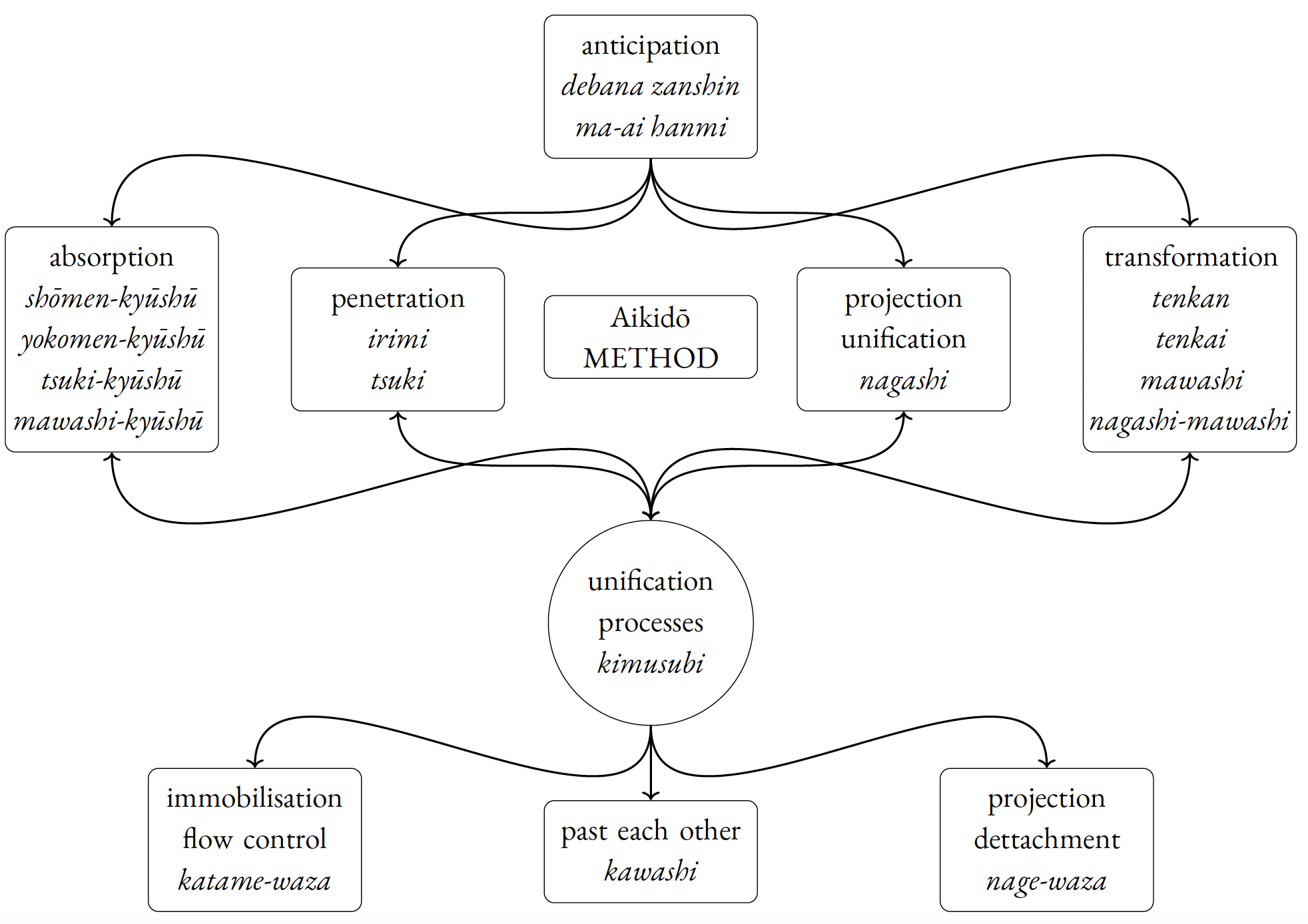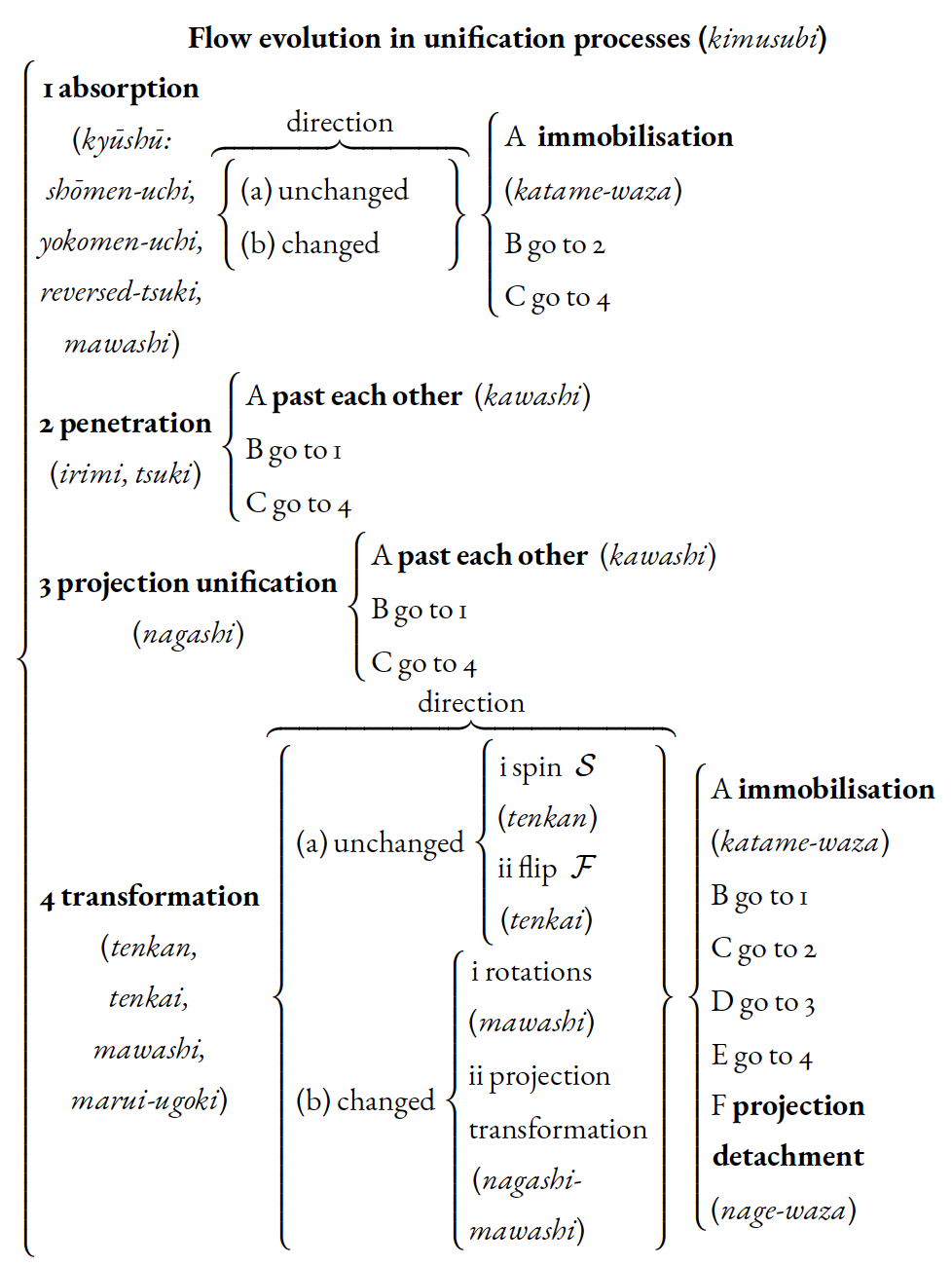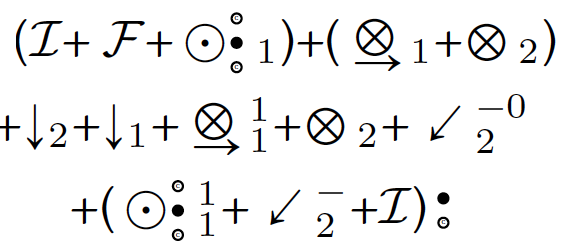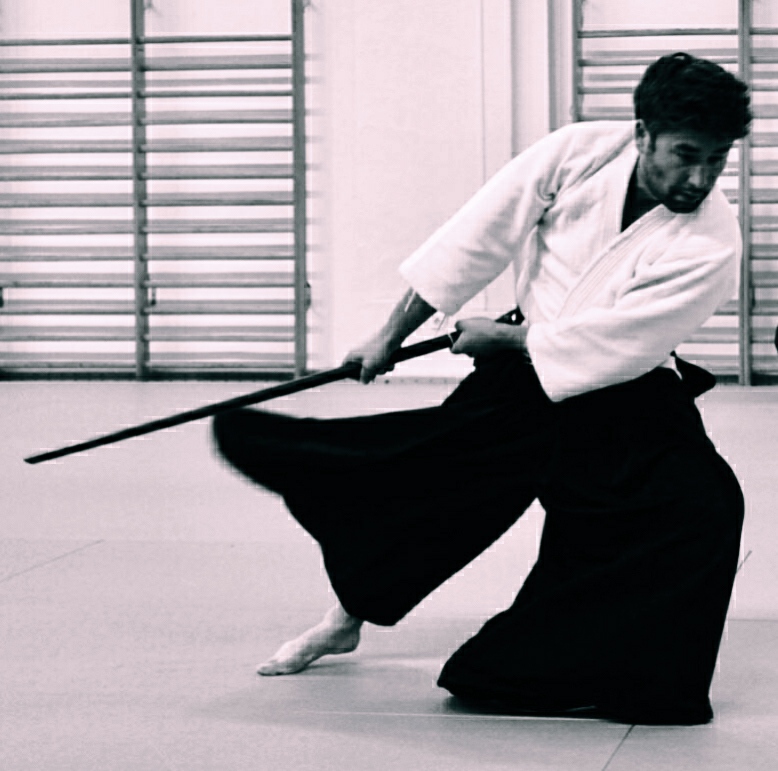
Aikido-script
A limited number of katana movements can be defined to construct single connected fluid movements. Therefore, one of the first steps consists of studying the individual language building blocks.
The dynamic concept of Aikido
Aikido can be regarded as the way of finding the unique path connecting an initial to a final state.
This is done by energy minimisation: that is, choosing the path which conserves the total remaining energy after efficiently dissipating some of the incoming kinetic energy when this is required to control the dynamics. This leads to the unification of colliding systems.
Depending on the dynamic problem, a considerable amount of kinetic energy may need to be injected to unify the dynamics of two approaching systems to minimise a collision.
The simplicity and beauty of Aikido consist of taking that unique
path. The difficulty lies in how to find it since there is a wide variety of paths encoded in the choice of the final state and some possible additional constraints along the path (where the path should or should not go through).
A life-long training of the body and the mind is required to dominate the ensemble of harmonic flow paths asymptotically.
We present a methodology to acquire the tools to learn the concepts of Aikido and put them in practice.

The Aikido method
The Aikido method starts with the anticipation of the energy flows surrounding us. A variety of alternative approaches depending on the situation are subsequently applied. This ultimately leads to the unification process.

Unification processes
The essence of Aikido lies in the unification processes to solve dynamic conflicts. These have to be studied in detail and have to be adapted to each situation.

Aikido technique
An Aikido technique consists of a unified smooth dynamic flow. This enables us to construct a technique as a concatenation of well-defined energy flows. Therefore, we can write in a compact way a technique using the Aikido-script.
Course content
- Gyaku-hanimi kokyuho (7:17)
- Ai-hanmi katate-dori ikkyo omote (4:01)
- Gyaku-hanmi katate-dori ikkyo ura (5:49)
- Gyaku-hanmi katate-dori kaiten-nage (3:41)
- Katana movements for techniques 6-7-8 (3:38)
- Ai-hanmi katate-dori shiho-nage omote (3:00)
- Ushiro ryote-dori irimi-nage ura (5:28)
- Final discussion (18:14)
